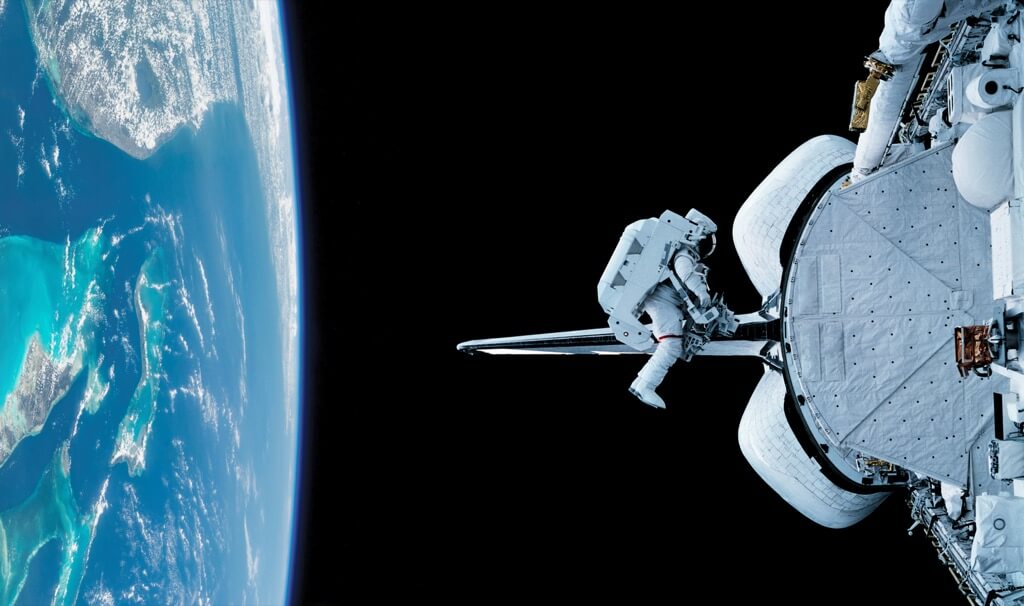The Moon, Earth’s celestial companion, has long been a source of fascination and wonder. While it graces our night skies with its gentle glow, the story of its birth and its many intriguing characteristics remain shrouded in mystery. In this comprehensive exploration, we embark on a journey through space and time to uncover the captivating tale of the Moon’s origins, delving into scientific theories, lunar oddities, and celestial wonders that continue to captivate our imaginations.
The Moon, a celestial body that has graced our night skies for eons, possesses an age-old secret. While it might seem as ancient as Earth itself, scientific evidence suggests otherwise. The prevailing hypothesis places the formation of the Moon approximately 30 to 50 million years after the birth of our Solar System. But how did the Moon come into existence, and what are the leading theories that attempt to unravel this cosmic enigma?
At the heart of the Moon’s origin story lies the Giant Impact Theory, a captivating narrative that offers insight into the celestial collision responsible for our lunar companion. According to this theory, the Moon did not exist alongside Earth from the beginning but emerged from a cataclysmic event.
The scenario unfolds as follows: A rogue planet-sized body, akin to a cosmic wanderer, hurtled through space and collided with the young Earth in a colossal impact. The sheer violence of this collision caused vast quantities of material to be ejected into space, forming a swirling cloud of debris around our planet.
This cloud, extending an astonishing 13,000 miles (or 22,000 kilometers) into space, gradually cooled and solidified into minute particles. Over time, these particles underwent a process of cosmic coalescence, merging into smaller celestial bodies known as moonlets. These moonlets, in a cosmic ballet, later united to form the celestial body we now recognize as the Moon.
While the Giant Impact Theory offers a compelling explanation for the Moon’s origins, it is not the only piece of the lunar puzzle.
One of the intriguing aspects that lend credence to the Giant Impact Theory is the remarkable similarity in oxygen isotope composition between the Moon and Earth. Unlike other celestial bodies formed in different regions of the Solar System, the Moon’s isotopic composition closely mirrors that of Earth. This striking resemblance suggests a shared origin or, more precisely, that the Moon emerged from rocks with origins close to Earth.
To delve deeper into the Moon’s mysterious past, we turn to Earth’s geological history. Rocks from South Africa, dating back an astonishing 3.2 billion years, provide valuable clues that shed light on the Moon’s formation. These rocks bear distinctive tidal patterns, featuring circular sand and silt layers. What makes these patterns significant is that they were created by tidal cycles—cycles that occurred on a daily, fortnightly, and monthly basis.
The existence of such tidal rock strata provides vital evidence. It suggests that the Moon could not have initially formed in a close, spherical orbit around Earth. Moreover, these regular tidal cycles would not have been displayed if the Moon had been entirely engulfed by Earth’s gravitational pull after its formation.
Deepening our understanding of the Moon’s formation, we explore the complexities of angular momentum within the Earth-Moon system. Computer simulations of this system’s angular momentum, combined with the Moon’s relatively modest core size, align seamlessly with the Giant Impact Theory. These simulations propose a fascinating concept: a significant portion of the Moon’s mass did not originate from Earth but instead came from the colossal impact itself.
While these simulations provide valuable insights, they also introduce intriguing questions about isotope compositions. Could the vaporized material from both Earth and the impacting planet have mixed and balanced isotope compositions during the aftermath of the collision? While this notion is intriguing, it remains speculative, leaving room for further scientific exploration and discovery.
The Moon, with its mysterious origin, continues to bewilder us with its peculiarities and unique characteristics. Join us as we embark on a cosmic voyage to explore the lunar enigmas that have captivated human imagination for centuries.
The Moon’s Unique Rotation
The Moon’s rotation, a celestial phenomenon intricately tied to its formation, presents a captivating feature. It boasts a rotation period of approximately 27.3 days, precisely mirroring the time it takes for the Moon to complete one full orbit around Earth. This synchronous rotation ensures that, from Earth’s vantage point, we always observe the same face of the Moon.
As a result, the far side of the Moon, often referred to as the dark side, remains perpetually hidden from our view unless observed from spacecraft. This synchronicity in rotation is a mesmerizing outcome of the Moon’s birth and gravitational interactions with Earth.
Journeying back in time, we discover that the Moon was once much closer to Earth than it is today. A remarkable revelation arises from tidal patterns found in rocks from South Africa, dating back 3.2 billion years. These rocks tell a tale of a bygone era when the Moon orbited our planet in a mere 20-day month.
During this distant epoch, Earth experienced significantly faster rotations, leading to the existence of around 550 days in a single year. This temporal juxtaposition of ancient lunar proximity and Earth’s faster spin unveils a dynamic celestial past.
Extreme Lunar Temperatures
The Moon, bathed in the cosmic rays of the Sun, experiences extreme temperature variations across its barren surface. When exposed to the Sun’s radiant embrace, lunar temperatures can soar to scorching highs of 243 degrees Fahrenheit (117 degrees Celsius).
Conversely, as the lunar night descends, this same desolate landscape plunges into the abyss of extreme cold, reaching temperatures as frigid as -272 degrees Fahrenheit (-169 degrees Celsius). This stark temperature duality creates a lunar cycle of extreme heat and cold, repeating every two weeks—a testament to the Moon’s unique relationship with its parent planet.
The phrase “once in a blue moon” has become synonymous with rarity and infrequency. But what does it truly signify in the realm of celestial events? This lunar idiom refers to the occurrence of two full moons within a single calendar month—a phenomenon that captures our fascination with the celestial dance of Earth’s natural satellite.
Comparing celestial bodies often yields unexpected insights. In a curious juxtaposition, the Moon surpasses Pluto in terms of size. While the Moon is approximately one-quarter of Earth’s diameter, Pluto’s moon, Charon, is relatively larger in proportion to its parent dwarf planet. This comparison highlights the intriguing diversity of celestial bodies within our Solar System.
Intriguingly, the Moon is bidding a gradual farewell to its home planet, Earth. Over the eons, it has been steadily distancing itself from our planet. This cosmic parting is a consequence of the Moon harnessing some of Earth’s kinetic energy. Presently, the Moon’s orbit recedes at an average rate of about 3.8 centimeters per year.
When the Moon first came into existence, it resided at a mere 14,000 miles (22,530 kilometers) from Earth. Today, it has distanced itself to approximately 450,000 kilometers, or over 280,000 miles.
As we conclude our lunar odyssey, the Moon’s origins continue to captivate and mystify us. The Giant Impact Theory offers a compelling narrative, yet the cosmos holds its secrets close. The Moon’s enigmatic past and present, from its synchronous rotation to its ancient proximity and extreme temperatures, remind us of the awe-inspiring wonders that linger just beyond our celestial doorstep.

